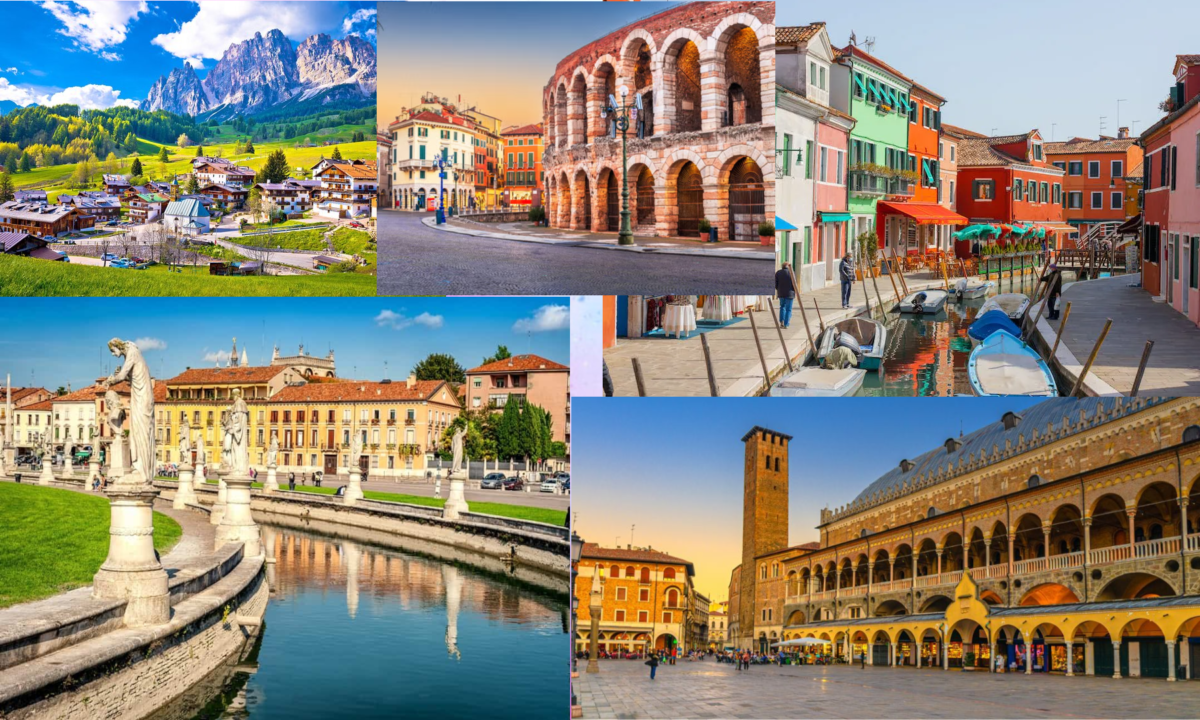Forget the main road—Italy’s best-kept secrets are found in its smallest corners. We explore 12 captivating borghi that prove that exploring the most beautiful little towns in Italy is done at a slower pace. From the cave hotels of Matera to the citrus groves of Rocca Imperiale, discover the hidden beauty of Italy’s stunning small towns.
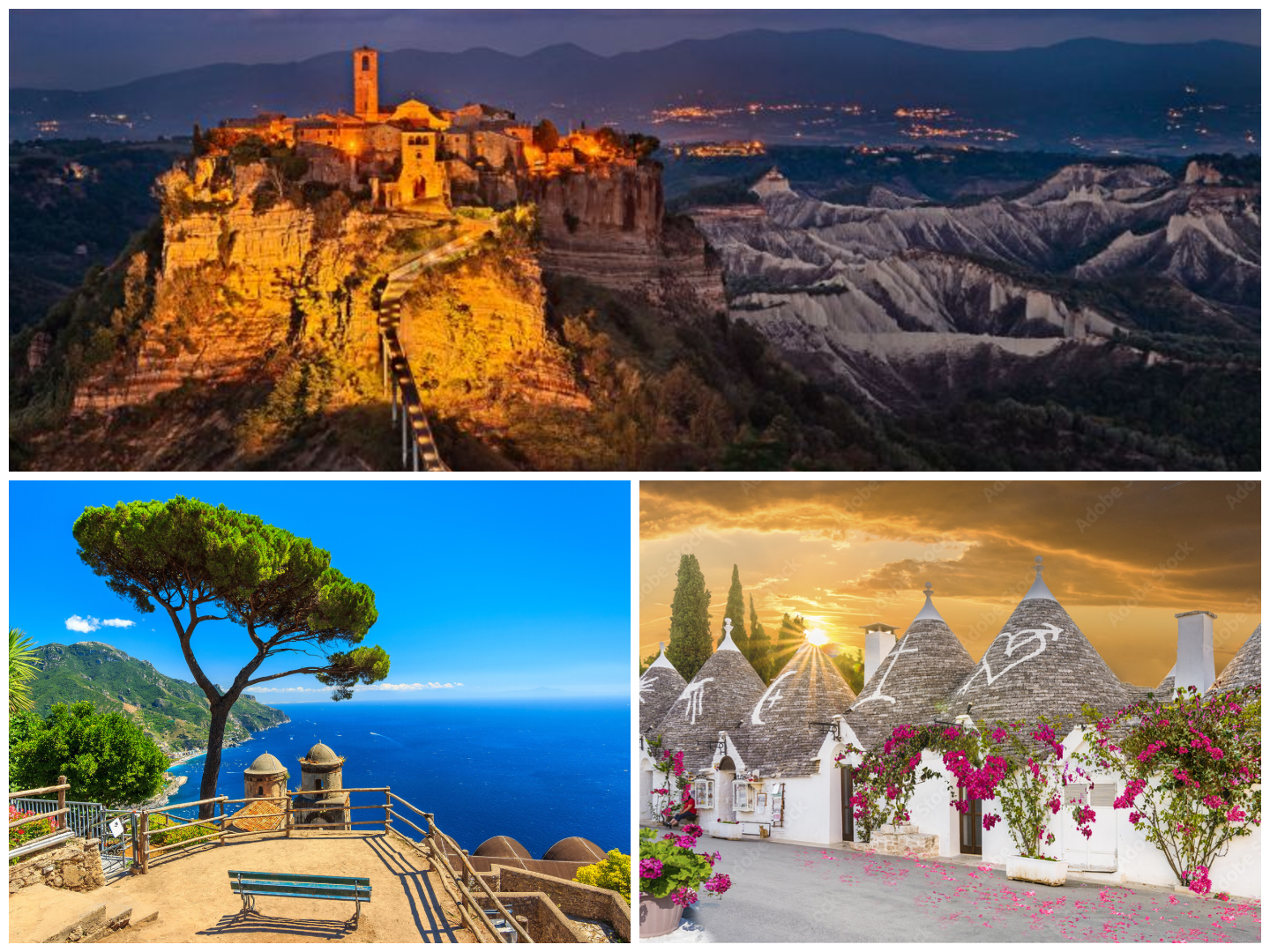
©Adobe Stock
Why These Towns Are So Appealing
Beyond the well-known cities of Rome, Florence, and Venice lies the true heart of Italy: the small towns, or borghi. These towns are not busy cities but instead charming, sunlit places filled with history, beautiful buildings, and local life. Italy has many lovely spots for slow travel, from the colorful harbors of Liguria to the ancient cave homes of Basilicata. Therefore, whether you’re looking for a romantic escape, a cultural experience, or a picturesque setting for your next trip, this guide will take you off the usual tourist paths to discover the most beautiful little towns in Italy. It combines famous coastal locations like Positano and Portofino with unique regional gems like Apulian trulli and the Calabrian coastline. You’ll discover twelve of these enchanting places that truly showcase the essence of the sweet life.
These towns provide a unique Italian experience that big cities can’t match. Their charm comes from their authenticity, since they preserve local traditions, dialects, and foods. They also have rich histories, often featuring well-preserved medieval walls, castles, and old buildings. Moreover, their stunning locations, whether on cliffs, among vineyards, or by lakes, make them special. These towns promote slow travel, urging visitors to enjoy their surroundings instead of rushing between tourist spots.
When You Should Visit
Best Time: Shoulder Seasons (April–May and September–October).
The weather is nice and warm, which is perfect for exploring and hiking. There are fewer people around compared to summer, and prices are lower too. This time of year is excellent for visiting beautiful coastal towns like Tropea and Ravello without having to deal with the hot sun during the day.
Summer (June–August)
Perfect for enjoying the beach and swimming, especially in beautiful places like Tropea and the Cinque Terre. Just keep in mind that it can get very hot, there will be a lot of people around, and prices may be higher during this time.
Winter (November–March)
This time of year provides a peaceful atmosphere and affordable prices. However, keep in mind that many seasonal shops, especially in beach towns, might be closed. It’s also an excellent opportunity to experience the rich culture in places like Matera and San Gimignano, where you can enjoy the historic charm without the crowds of tourists.
The 12 Most Beautiful Small Towns in Italy
Alberobello
A genuinely unique UNESCO World Heritage site, this town looks like it sprang from a fairy tale. It is defined by its over 1,500 trulli—traditional, dry-stone huts with conical gray roofs, often adorned with painted religious or magical symbols. Therefore, Alberobello (Apulia) offers a whimsical architectural experience and a tangible connection to Puglia’s rustic past.
Ravello
Nestled high above the stunning coastline, Ravello is a peaceful retreat from the busy towns along the shore. Furthermore, it’s well-known for its beautiful villas and gardens, especially Villa Rufolo and Villa Cimbrone. The “Terrace of Infinity” at Villa Cimbrone offers breathtaking views of the Mediterranean Sea. Many artists and writers love visiting Ravello for its calming atmosphere and inspiring scenery.
Civita di Bagnoregi
Often referred to as “The Dying Town,” this ancient village is fascinating to see, primarily because the volcanic rock beneath it is slowly eroding it. Consequently, the town is perched high on a plateau, making it feel like a hidden gem that you can only reach by walking across a long, modern bridge. However, as you make your way across, you’ll be rewarded with peaceful, historic stone streets that echo with stories from the ancient Etruscan civilization. In the end, there’s a unique sense of timelessness here that makes it feel like you’ve stepped back in history.
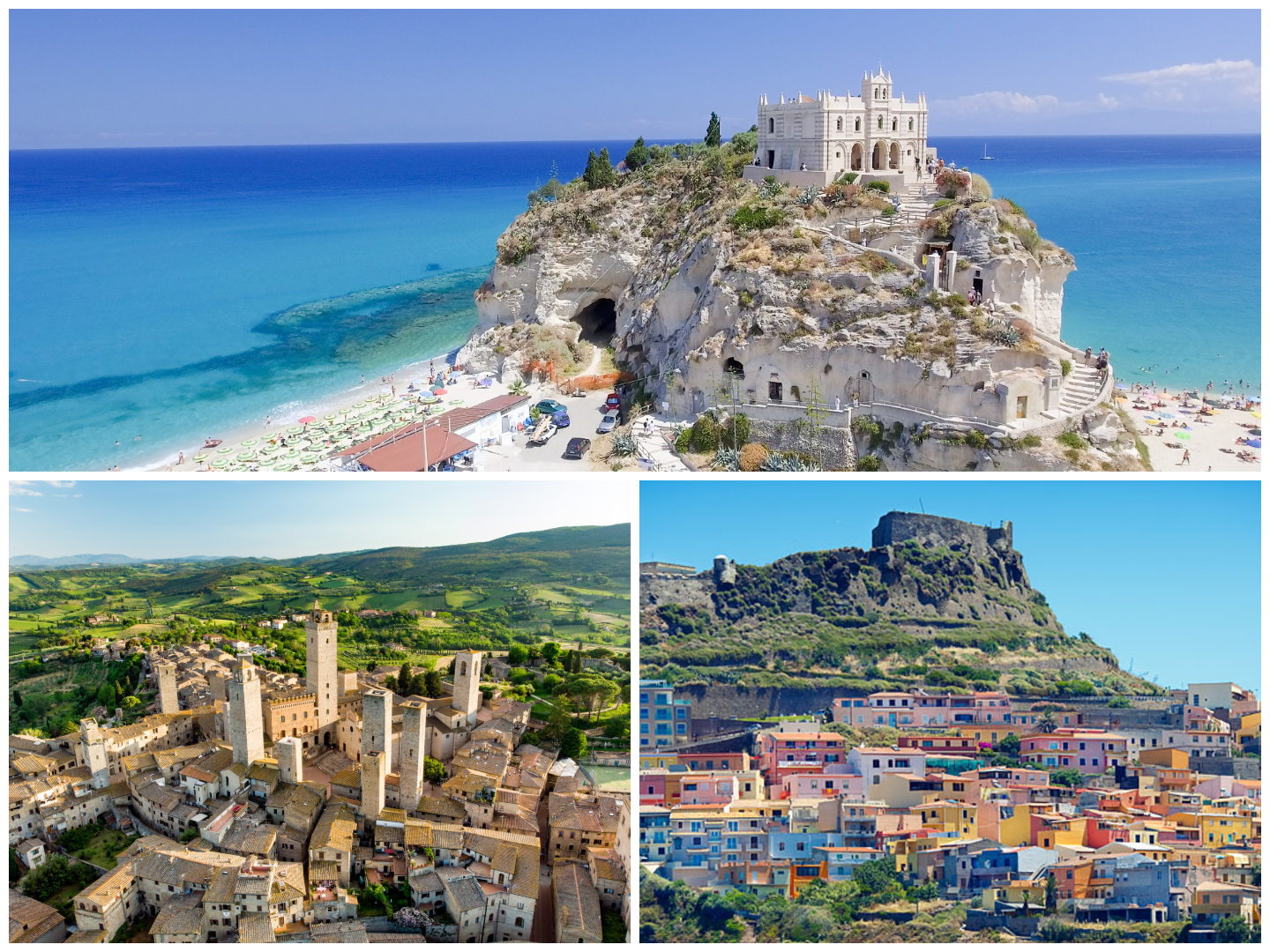
CastelSardo
A medieval fortress town is perched on a rocky cliff overlooking the Gulf of Asinara. This charming town of Castelsardo, with its colorful houses, climbs up the hill to the impressive Doria Castle at the top. It serves as a vibrant center for traditional Sardinian crafts, particularly basket-weaving, and offers breathtaking views of the coastline.
San Gimignano
Known as the “Manhattan of the Middle Ages,” this walled hilltop town is instantly recognizable by its imposing skyline of fourteen preserved medieval towers. Because of this unique sight, it is considered one of the most beautiful little towns in Italy. Wealthy families originally built the towers as symbols of their power, and today, the town offers a deep dive into Tuscan history. Furthermore, it is famous for its ancient frescoes, authentic leather goods, and the world-renowned local white wine, Vernaccia di San Gimignano.
Note: You might also be interested in our guide about the nearby Siena.
Tropea
This jewel of the “Coast of the Gods,” Tropea, is famed for its rugged cliff setting and crystal-clear turquoise waters. Its iconic symbol is the Santuario di Santa Maria dell’Isola, a beautiful medieval church built on a separate sea-stack. Tropea is perfect for beach lovers, diving enthusiasts, and foodies seeking the famed local red onions.
Cinque Terre (Vernazza & Manarola)
The five villages of Cinque Terre are a UNESCO-protected spectacle where colorful, narrow houses cling precariously to the rugged coastal cliffs, separated by dramatic ravines and linked by scenic hiking trails. This makes them some of the most beautiful little towns in Italy. For example, Vernazza is often cited as the most picturesque, famous for its small natural harbor. Meanwhile, Manarola is known for its dramatic cluster of buildings cascading to the sea, offering breathtaking sunset views. Consequently, this area is the ultimate destination for hikers, sea lovers, and photographers.

Portofino
The epitome of Italian glamour and Mediterranean chic. This exclusive resort town features a tiny, perfectly crescent-shaped harbor where vibrant, pastel-colored buildings reflect in the turquoise water, backed by steep, lush hillsides. Portofino is ideal for luxury window shopping, enjoying fresh seafood at a harborside table, and spotting superyachts.
Positano
The most famous and undeniably spectacular of the Amalfi Coast towns, Positano is a vertical cascade of sun-bleached houses tumbling down a steep hillside to the cobalt blue sea. Known for its glamorous, yet relaxed “atmosphere, “it’s a haven for luxury travelers, artisanal boutiques (Moda Positano), and those seeking iconic views from its chic pebble beaches.
Note: If you liked Portofino, you could also enjoy our guide about Genoa.
Rocca Imperiale
Known as the “City of Lemons” for its famous sweet lemons, this lesser-known town features the impressive Svevian Castle, built by Frederick II. The city has narrow, stepped alleys that wind up the hills, providing a peaceful and authentic Calabrian experience away from the usual tourist paths.
Find hotels in Rocca Imperiale
Locorotondo
Locorotondo is a town in the beautiful Valle d’Itria, and its name means “Round Place,” which describes its circular layout on a hill. The city has a charming whitewashed historic center and offers stunning views of the nearby olive groves and vineyards. It is a peaceful place, ideal for wine lovers (especially those who enjoy Locorotondo DOC) and for leisurely exploring the area.
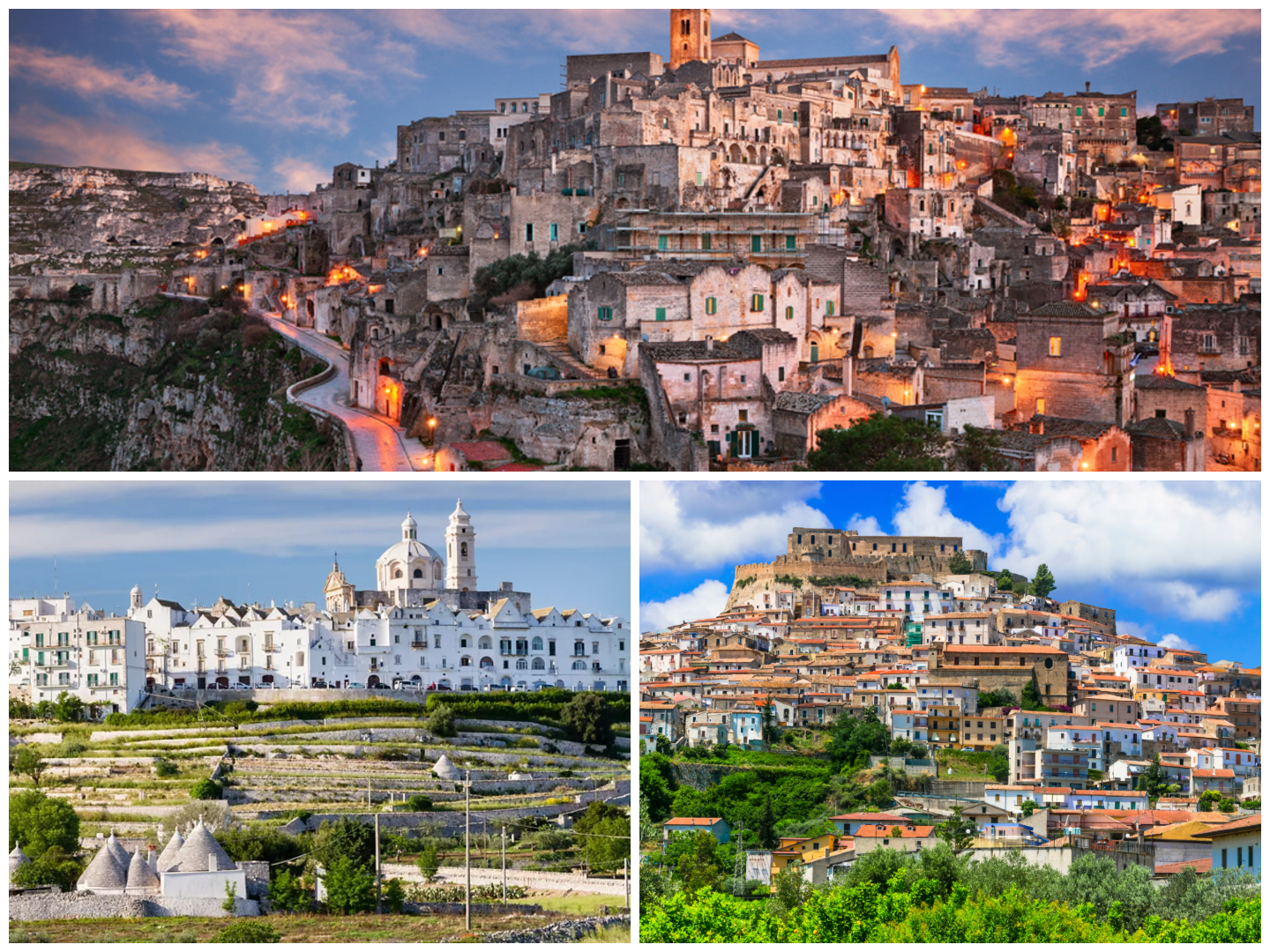
Matera
One of the world’s oldest continually inhabited settlements, Matera is famous for the Sassi, a complex of cave dwellings, churches, and monasteries carved into the limestone rock. Now a UNESCO World Heritage site, you’re assured to have been transformed into boutique hotels and restaurants, offering Matera’s stunningly beautiful, prehistoric atmosphere unlike any other in Europe.
Conclusion
Whether you’re standing among the cone-shaped houses of Alberobello, gazing out from Ravello’s infinite terrace, or navigating the labyrinthine alleys of Castelsardo, these twelve destinations represent the most beautiful little towns in Italy. Therefore, they serve as a potent reminder that Italy’s beauty is as deep as its history. They are more than just photo opportunities; instead, they are vibrant communities where tradition is a way of life.
By choosing to explore these smaller, vibrant borghi, you choose a travel experience built on immersion, not just observation. So, book your ticket, slow your pace, and discover the true soul of Italy—one spectacular little town at a time. The perfect European escape awaits.
Take a look at

Europe’s Top Fairytale Destinations for a December Getaway
If you still haven’t decided where to go, check out our latest guide to find out which December travel destination is best suited for our
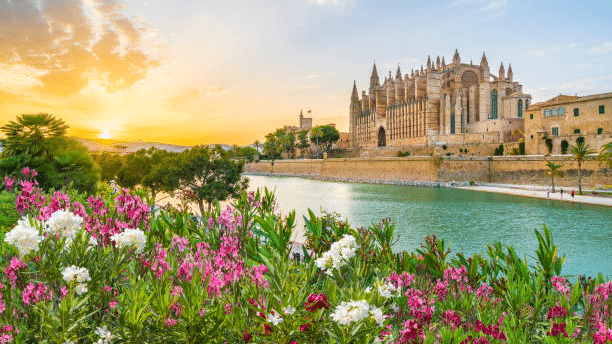
Warmest winter destinations in Europe
This article is for those who don’t like cold winter too much and prefer to bask under the warm sun rather than go skiing. That’s
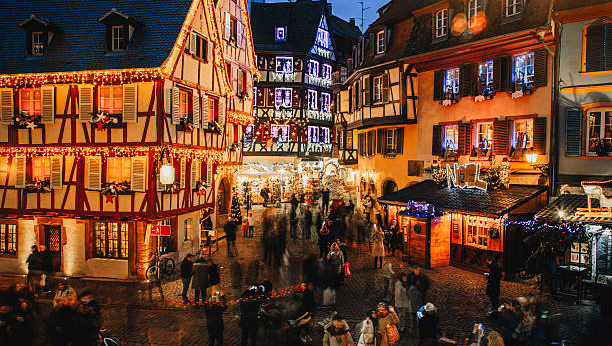
Weekend in Colmar
Today we will introduce to you this little town, which truly resembles the ones from the Disney fairytales. That’s why we are almost 100% sure
Photo credits:
©Adobe Stock



